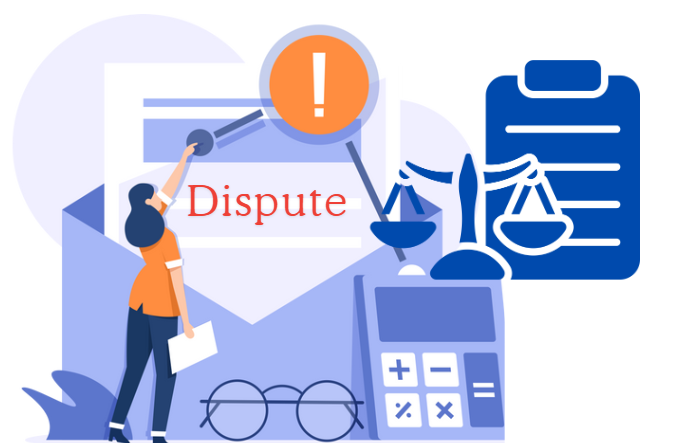
How To Do Disputes Using A Credit Repair Software
Did you know that disputing errors on your credit report can significantly improve your credit score?
Credit repair software simplifies and automates this process.
Making it accessible and manageable for both individuals and credit repair professionals.
This guide will walk you through the steps of using credit repair software to dispute inaccuracies on your credit report.
Understanding the Dispute Process

Before going to the specifics of using credit repair software, let's understand the dispute process.
Identify Errors: Review your credit report to identify any inaccuracies or negative items that you believe are incorrect.
Gather Evidence: Collect any documentation that supports your dispute.
This includes payment records, correspondence with creditors, or identity theft reports.Submit Dispute Letters: Send formal dispute letters to the credit bureaus, creditors, or collection agencies to request the removal or correction of the inaccurate information.
Follow Up: Track the progress of your disputes and follow up as necessary to ensure timely resolution.
Knowing that simple dispute process steps will prepare you to execute it effectively.
Step-by-Step Guide to Disputing Using Credit Repair Software

Step 1: Choose the Right Credit Repair Software
There are several credit repair software options available. Each with its unique features and benefits.
Some popular choices include Credit Repair Cloud, DisputelyAI, and Client Dispute Manager.
Choose software that fit your needs.
Whether you are an individual looking to manage your credit or a professional offering credit repair service.
Step 2: Import Your Credit Reports
Once you have chosen your software, the first step is to import your credit reports from the major credit bureaus (Equifax, Experian, and TransUnion).
Most credit repair software allows you to import these reports directly, making the process seamless and efficient.
Step 3: Review and Identify Errors
After importing your credit reports, review them carefully to identify any errors or negative items.
Common inaccuracies include:
Incorrect personal information (name, address, etc.)
Accounts that don’t belong to you
Incorrect account status (e.g., showing late payments when you paid on time)
Duplicate accounts
Incorrect credit limits or balances
Step 4: Generate Dispute Letters
Using your credit repair software, generate dispute letters for each identified error.
Most software offers templates and customization options to ensure your letters are professional and tailored to your specific disputes.
Key elements of a dispute letter include:
Your personal information
A clear identification of the disputed item
An explanation of why the item is incorrect
Any supporting documentation
A request for correction or removal of the item
Step 5: Submit Dispute Letters
Once your dispute letters are generated, time to take action.
Submit them to the relevant credit bureaus, creditors, or collection agencies.
Some credit repair software can send these letters electronically.
Others may require you to print and mail them.
Step 6: Track Dispute Progress
Credit repair software typically includes tracking features.
This allows you to monitor the progress of your disputes.
You’ll receive updates on the status of each dispute.
Including when the credit bureau or creditor has received your letter.
It will also include when they are investigating, and the outcome of the dispute.
Step 7: Follow Up as Needed
What if you don’t receive a response within the legally mandated time frame (usually 30 days)?
Follow up with the credit bureau or creditor.
Your credit repair software can help you generate follow-up letters and track these communications.
Step 8: Review Updated Credit Reports
Once your disputes are resolved, review your updated credit reports.
This is to ensure the inaccuracies have been corrected or removed.
Finally, import the updated reports into your software to keep your records current and accurate.
Tips for Maximizing the Effectiveness of Your Disputes
To ensure you get the best results from your credit repair efforts, here are some additional tips...
Tip 1: Prioritize the Most Impactful Errors
Not all errors on your credit report have the same impact on your credit score.
Focus on disputing errors that have the most significant effect, such as:
Late payments
Collections accounts
Charge-offs
High balances relative to your credit limits
By addressing these high-impact items first, you can see a more immediate improvement in your credit score.
Tip 2: Be Persistent
The dispute process can be time-consuming, and it may require multiple attempts to get an error corrected.
Don’t get discouraged if your first dispute is denied or if you don’t see immediate results.
Persistence is key to achieving successful outcomes.
Tip 3: Keep Detailed Records
Maintain a comprehensive record of all your credit repair activities, including:
Copies of your credit reports
Dispute letters sent
Correspondence with credit bureaus and creditors
Notes on phone calls and conversations
Responses and resolutions
Having detailed records will help you stay organized and provide evidence if you need to follow up or escalate your disputes.
Tip 4: Use the Right Dispute Reasons
When generating your dispute letters, ensure that you use accurate and specific reasons for each dispute.
Generic or vague reasons are less likely to be successful.
Clearly explain why the information is incorrect and provide supporting documentation whenever possible.
Tip 5: Leverage Consumer Protection Laws
It’s also critical to familiarize yourself with consumer protection laws.
What are those consumer laws?
Such as the Fair Credit Reporting Act (FCRA) and the Fair Debt Collection Practices Act (FDCPA).
These laws provide guidelines and protections for consumers disputing credit report inaccuracies.
Knowing your rights can help you navigate the dispute process more effectively.
Tip 6: Consider Professional Help
If you’re facing particularly complex issues or if you don’t have the time to manage the dispute process yourself, consider seeking help from a credit repair professional.
Many professionals use credit repair software and have the expertise to handle disputes efficiently.
Tip 7: Monitor Your Credit Regularly
Even after you’ve resolved errors on your credit report, it’s important to continue monitoring your credit regularly.
This will help you catch any new inaccuracies or issues early and address them promptly.
Many credit repair software options offer ongoing credit monitoring as part of their service.
Tip 8: Stay Informed and Updated
Credit repair laws and practices can change over time.
Stay informed about the latest developments and updates in the credit repair industry.
This will give you an assurance that you’re using the most effective strategies and tools.
Remember…
Successfully disputing errors on your credit report can lead to significant improvements in your credit score.
By using credit repair software and following these additional tips, you can enhance the effectiveness of your disputes.
This can help you achieve better results.
Remember to be persistent.
Keep detailed records, stay informed about your rights and the latest credit repair practices.
With the right approach and tools, you can take control of your credit.
A brighter financial future shines ahead!
Conclusion
Disputing inaccuracies on your credit report is a crucial step toward improving your credit score and financial well-being.
Credit repair software makes this process more manageable.
It’s proven effective by automating tasks, providing professional templates, and tracking your progress.
Whether you’re an individual working on your credit…
or a professional offering credit repair services…
Using the right software can streamline your efforts.
Choose a reliable credit repair software.
Follow the steps outlined above, and take control of your credit journey with confidence.
